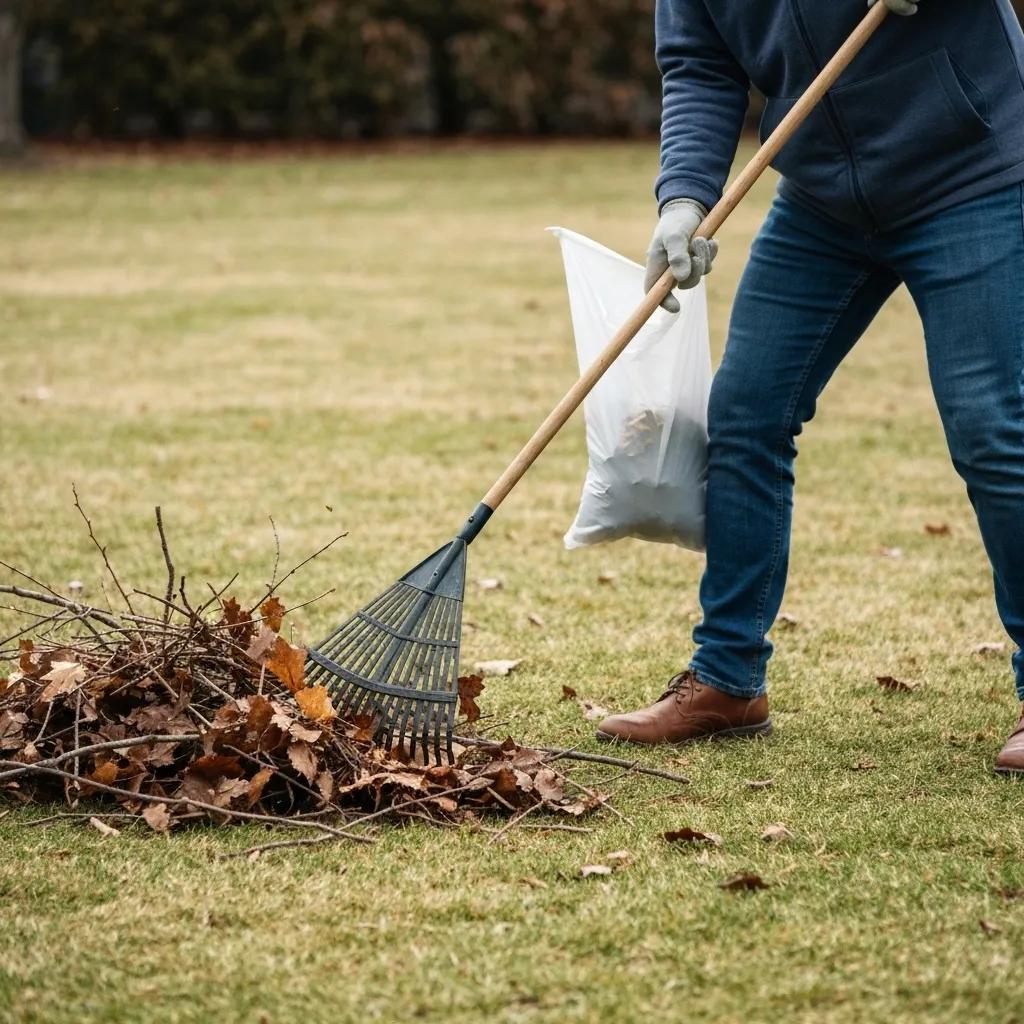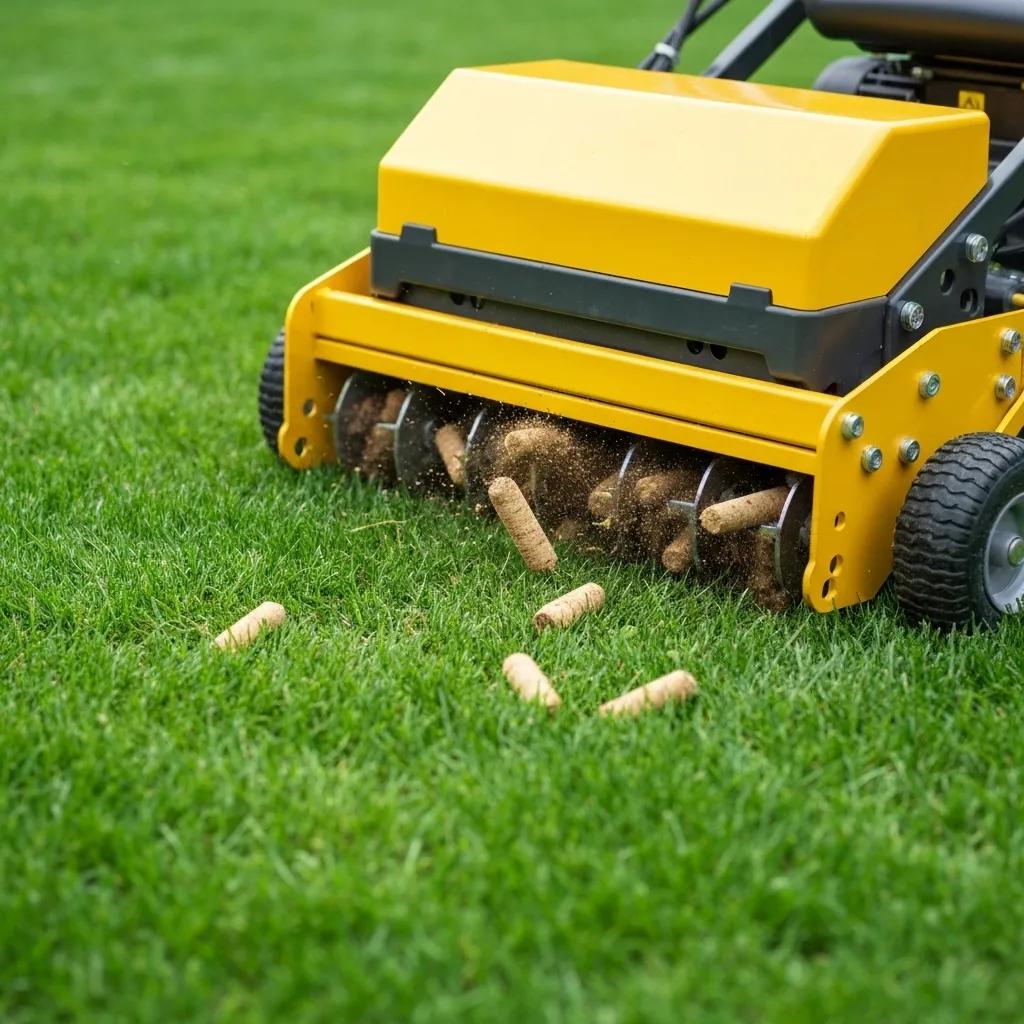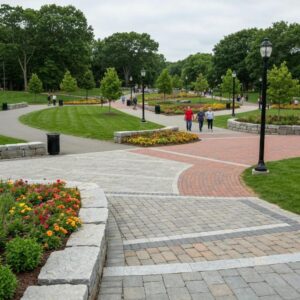Transform Your Massachusetts Yard This Spring: Download Your Free Cleanup Checklist & Explore Our Expert Services!
As Massachusetts landscapes shake off winter’s grip, they often reveal hidden debris and stress that can stifle new growth and diminish curb appeal. This thorough spring yard cleanup guide provides a clear plan—complete with ideal timing, debris removal techniques, lawn revitalization strategies, pruning advice, hardscaping tasks, cost considerations, and a complimentary PDF checklist—to help you bring your outdoor spaces back to life. Supported by Cut Above Landscaping Inc. and our expert landscaping and hardscaping services, this guide offers a blend of DIY tips and professional solutions to save you time and ensure lasting beauty.
Inside this guide, you’ll find:
- When to kick off your spring cleanup in Massachusetts
- Effective methods for clearing debris and assessing winter damage
- Top practices for reviving your lawn
- Guidance on pruning, planting, and preparing garden beds
- Crucial hardscaping and commercial property maintenance tasks
- Factors influencing professional cleanup costs and their advantages
- How to download and make the most of your free, interactive checklist
Each section starts with a clear definition, explains its importance, and offers practical examples, providing answers ready for featured snippets under every heading.
When Should You Tackle Your Spring Yard Cleanup in Massachusetts?
Pinpointing the best time for your spring yard cleanup in Massachusetts involves watching soil moisture, frost dates, and local weather patterns to encourage healthy grass and plant emergence. Starting too soon can harm compacted turf, while delaying allows weeds to get a head start. For most homeowners, late March through mid-April offers a good balance of thawed ground and manageable soil moisture.
What Are the Ideal Weather Conditions for Spring Cleanup in MA?
The perfect conditions for spring cleanup include temperatures above 50°F, at least two consecutive dry days, and soil that gives just a little when you step on it. These factors ensure your tools work efficiently and your turf can recover quickly.
| Condition | Ideal Range | Benefit |
|---|---|---|
| Air Temperature | 50°F – 60°F | Helps prevent tool slippage and root damage |
| Soil Moisture Level | 20% – 30% (vol.) | Allows for aeration without causing soil compaction |
| Precipitation Pause | 48 hours dry spell | Improves traction and reduces equipment clogging |
Meeting these weather benchmarks supports thorough cleanup without negatively impacting soil structure or plant health.
How Does Massachusetts’ Climate Influence Cleanup Timing?
Massachusetts’ unpredictable spring temperatures and late frosts can push cleanup start dates back by several weeks each year. Coastal areas like Salem or Essex County might thaw sooner, while inland towns such as Billerica or Lexington could see delayed soil warming. Keeping an eye on local frost-date forecasts helps you adjust your schedule and avoid premature work that stresses emerging grass.
What Common Post-Winter Yard Issues Should You Expect in Massachusetts?
- Patches of snow mold that can smother grass
- Salt buildup along driveways and on lawns
- Fallen branches from ice storms
- Compacted soil and matted thatch layers
- Early weed sprouts appearing in thawed spots
Identifying these issues early helps you prioritize cleanup tasks and protect delicate turf and plantings from further harm.
How Do You Effectively Clear Debris and Assess Winter Damage in Massachusetts?
Effective debris removal and damage assessment involve a systematic cleanup process combined with a careful inspection of your turf’s health, paving, and root systems. Clearing away leftover winter materials helps prevent diseases and prepares the ground for targeted repairs.
What Types of Winter Debris Should You Remove from Your Yard?

Before you start revitalizing your lawn, make sure to identify and remove common debris:
- Fallen leaves, which block sunlight and trap moisture
- Twigs and branches, which can damage turf and make mowing difficult
- Snow mold residue, appearing as gray-white fungal patches
- Salt deposits, visible as white crusts on hardscaping and grass
- Animal nests or debris, indicating potential pest activity
Benefits of Winter Debris Removal
| Debris Type | Characteristic | Cleanup Benefit |
|---|---|---|
| Fallen Leaves | Mats that are partially decomposed | Restores sunlight access and reduces fungal growth |
| Twigs/Brush | Sharp, obstructive pieces | Protects mower blades and prevents turf injury |
| Salt Crust | Crystals that absorb moisture | Prevents chemical burn and helps maintain balanced pH |
| Snow Mold | Fungal patches | Halts its spread and allows healthy grass to recover |
A thorough clearing of debris prepares your lawn for essential spring care tasks like aeration and overseeding.
How Can You Identify and Treat Snow Mold and Salt Damage?
Look for circular, gray patches when the ground thaws to identify snow mold. Salt damage typically appears as brown or bleached grass near driveways. Here’s how to treat them:
- Gently rake areas affected by mold to break up fungal threads
- Add a light layer of sand or loam to improve drainage
- Flush areas impacted by salt with fresh water to wash away excess sodium
- Reseed any bare spots with grass seed that tolerates cool weather
Addressing these issues promptly boosts your turf’s resilience and uniformity.
Why Is Debris Removal Crucial for Spring Lawn Health?
Removing debris allows more sunlight to reach the grass, improves air circulation, and eliminates disease carriers. This creates ideal conditions for grass roots to absorb nutrients freely and for mowing to be done without obstructions.
What Are the Best Practices for Massachusetts Spring Lawn Care?

Spring lawn care in Massachusetts focuses on dethatching, aeration, fertilization, seeding, and mowing to rebuild density and structure after the dormancy of winter.
How and When Should You Rake and Dethatch Your Lawn?
Raking removes dead grass and loosens debris that prevents water from penetrating the soil. Do this when your turf starts actively growing (when soil temperatures are above 45°F):
- Begin with a spring-tine rake, moving in one direction
- Follow up with a dethatching rake or machine to remove embedded thatch
- Gather the removed material in lawn bags for composting or disposal
Effective dethatching encourages root development and prepares the soil for aeration.
Why Is Aeration Important for Massachusetts Lawns?
Aeration reduces soil compaction by pulling out plugs of thatch and soil, allowing roots to access oxygen, water, and nutrients more easily.
| Benefit | Mechanism | Outcome |
|---|---|---|
| Improved Air Exchange | Creates small holes in the soil | Boosts root respiration |
| Enhanced Water Infiltration | Clears blockages in the thatch layer | Reduces water runoff and drought stress |
| Nutrient Uptake | Opens pathways to the root zone | Promotes thicker, greener turf |
Aerating in early to mid-spring, when nutrient uptake is at its peak, helps your lawn recover quickly from winter stress.
What Fertilization and Weed Control Strategies Work Best in MA?
Targeted fertilization and pre-emergent herbicides help create a balanced turf environment:
- Apply a slow-release fertilizer with nitrogen and phosphorus in late April
- Use a pre-emergent herbicide when soil temperatures approach 50°F to prevent crabgrass and other annual weeds
- Consider using compost tea to boost microbial activity and help prevent diseases
- Treat broadleaf weeds in specific spots with a post-emergent herbicide after mowing
How Do You Seed Bare Patches and Overseed for a Dense Lawn?
Overseeding fills in thin areas and improves the overall density of your lawn:
- Loosen the soil in bare patches using a hand fork or aerator
- Spread the recommended cool-season grass seed evenly across the lawn
- Lightly rake the area to ensure good seed-to-soil contact
- Water daily until the seeds begin to sprout (typically 10–14 days)
Successful germination helps prevent soil erosion and reduces weed invasion.
What Are the Best Practices for Your First Spring Mow?
For your first mow of the season, aim to remove no more than one-third of the grass blade height, keeping the mower deck set at 3–3.5 inches:
- Make sure your mower blades are freshly sharpened for clean cuts
- Set your mower deck slightly higher than you will during the summer
- Mow when the grass is dry to avoid clumping and damaging your equipment
- Vary your mowing direction each time to encourage upright growth
A careful first mow helps build resilience and sets a positive tone for the growing season.
How Should You Prune and Care for Trees, Shrubs, and Garden Beds in Spring in Massachusetts?
Pruning and preparing garden beds encourage healthy growth by removing dead material and enriching the soil before you plant.
When and How Do You Prune Trees and Shrubs for Optimal Growth?
Spring pruning is the time to remove winter damage and shape new growth:
- Prune branches damaged by cold back to healthy wood once buds begin to swell
- Thin out dense branches to improve light penetration and air circulation
- Use bypass pruners for branches less than one inch in diameter; use loppers or a pruning saw for larger limbs
- Seal cuts larger than two inches with pruning paste to prevent disease entry
Proper timing and technique will enhance flowering and structural integrity.
How Do You Prepare Flower and Garden Beds for Spring Planting?
Preparing your garden beds readies the soil for strong plant establishment:
- Remove winter mulch and dead plant material to expose the soil
- Weed thoroughly, making sure to pull out the roots to prevent regrowth
- Mix in two to three inches of compost or aged manure to enrich the soil’s organic content
- Loosen the top six inches of soil using a garden fork or tiller
Well-prepared beds support healthier root systems and more consistent blooming.
What Are the Benefits of Mulching and How Should You Apply It?
Mulching helps retain soil moisture, suppress weeds, and stabilize soil temperature.
| Mulch Type | Coverage Layer | Key Benefit |
|---|---|---|
| Shredded Bark | 2–3 inches | Provides long-lasting moisture retention |
| Cocoa Hulls | 1–2 inches | Offers aesthetic appeal and a pleasant aroma |
| Pine Straw | 2 inches | Helps acidify soil, ideal for plants like azaleas |
Applying mulch around the base of beds and trees helps prevent soil erosion and reduces the need for frequent maintenance.
Which Perennials and Annuals Are Best for Massachusetts Spring Planting?
| Plant | Category | Bloom Time |
|---|---|---|
| Daylily (Hemerocallis) | Perennial | Early to mid-summer |
| Coneflower (Echinacea) | Perennial | Mid to late summer |
| Impatiens | Annual | Late spring until the first frost |
| Lobelia | Annual | Late spring through early fall |
Choosing hardy varieties suited to Massachusetts USDA zones 5–7 ensures reliable performance and a succession of color throughout the seasons.
What Hardscaping and Property Maintenance Tasks Should Massachusetts Homeowners and Businesses Include?
Spring maintenance for patios, walkways, and drainage systems helps preserve property value and minimize potential liabilities.
How Do You Clean Patios, Walkways, and Driveways After Winter?
Pressure washing, once temperatures are consistently above 45°F, is effective for removing salt stains, algae, and accumulated debris:
- Sweep away loose materials before washing to prevent clogging your equipment
- Use a pressure washer rated between 2,500–3,000 psi with a fan nozzle for even cleaning
- Apply a masonry cleaner to stubborn stains, then rinse thoroughly
- Consider sealing paver or concrete surfaces to prevent future staining
A clean hardscape complements your revitalized lawn and provides an immediate boost to curb appeal.
Why Is Inspecting Drainage Systems and Gutters Important in Spring?
Clogged gutters and improperly aligned drains can lead to water pooling, which erodes foundations and oversaturates soil:
- Clear leaves and debris from roof valleys and downspouts
- Adjust downspout extenders to direct water safely away from your home’s foundation
- Flush underground drain lines with a garden hose to ensure they are clear and flowing properly
- Repair any cracked gutter sections to prevent leaks
Ensuring your drainage systems are dry and functional protects landscape beds and structural elements from water damage.
What Are Key Spring Cleanup Considerations for Commercial Properties in MA?
Business owners can benefit from specific tasks that maintain a professional appearance and ensure safety:
- Schedule sidewalk and parking lot sweeping before peak business hours
- Inspect exterior lighting and signage for any damage sustained over winter
- Refresh spring planters with low-maintenance perennial flowers
- Arrangement for professional services for large-scale debris removal and lawn aeration
A well-maintained commercial exterior enhances customer perception and encourages repeat business.
How Much Does Professional Spring Yard Cleanup Cost in Massachusetts, and What Are the Benefits?
Professional spring cleanup services combine efficiency, access to specialized equipment, and horticultural expertise to deliver consistent, high-quality results.
What Factors Influence the Cost of Spring Yard Cleanup in MA?
The cost of cleanup depends on your yard’s size, the complexity of the terrain, the number of services you need, and local labor rates:
- The square footage of your lawn affects the time required for mowing, aeration, and overseeding
- The density of trees and shrubs influences the labor and equipment needed for pruning
- Adding hardscaping tasks like power washing or gutter cleaning expands the scope of service
- Specialized treatments for issues like snow mold and salt damage require specific materials
Understanding these factors will help you budget accurately and select the most suitable service package.
How Can Professional Services Save Time and Improve Results?
Hiring professionals frees up your personal time and ensures tasks are completed with precision:
- Skilled teams can complete multi-step cleanups in a single visit
- Commercial-grade dethatchers and aerators provide deeper soil conditioning
- Certified technicians can identify subtle issues like root diseases or grading problems
- Ongoing maintenance plans help sustain your lawn’s health with scheduled follow-ups
Partnering with professionals speeds up your lawn’s recovery and maximizes its curb appeal throughout the season.
How Do You Request a Free Estimate from Cut Above Landscaping Inc.?
To schedule your complimentary consultation:
- Visit our website and fill out the “Free Estimate” form.
- Provide details about your property—its size, the services you need, and your preferred timing.
- You’ll receive a personalized proposal outlining the tasks, timeline, and clear pricing.
Requesting an estimate helps you fully understand the scope and advantages of professional spring yard cleanup.
Where Can You Download the Ultimate Spring Yard Cleanup Checklist PDF for Massachusetts?
This complimentary, printable PDF compiles every step—from clearing debris to hardscaping tasks—into an an interactive checklist you can use as you work.
What Is Included in the Free PDF Checklist?
The downloadable guide features:
- A seasonal timing calendar specifically tailored for Massachusetts
- Step-by-step cleanup tasks with checkboxes for tracking
- Lists of necessary equipment and supplies for each stage
- Space for your notes on local conditions and links to professional services
How Can You Use the Interactive Checklist to Track Your Cleanup Progress?
The interactive format allows you to:
- Mark tasks as complete on any device or a printed copy
- Record important observations—like soil moisture, weather delays, or damage findings
- Share your progress with service providers for seamless coordination
- Set reminders that align with local frost and bloom dates
How Does the Checklist Connect to Professional Services Offered Locally?
Each step in the checklist points to corresponding services offered by Cut Above Landscaping Inc., enabling you to:
- Link debris removal items to our comprehensive cleanup packages
- Match pruning and aeration phases with our specialized service crews
- Transition smoothly to ongoing maintenance plans after the initial cleanup is finished
Maintaining a thriving Massachusetts yard requires more than just occasional raking; it demands a strategic approach to timing, cleanup, care, and sometimes, professional assistance. By following this guide and utilizing the free PDF checklist, you can restore your lawn’s health, enhance plant performance, and preserve your hardscaping. When you need extra help, expert equipment, or a more efficient approach, scheduling professional spring yard cleanup services will ensure your property reaches its full curb appeal potential. Download your checklist today and get ready to enjoy a vibrant, resilient outdoor space all season long.






